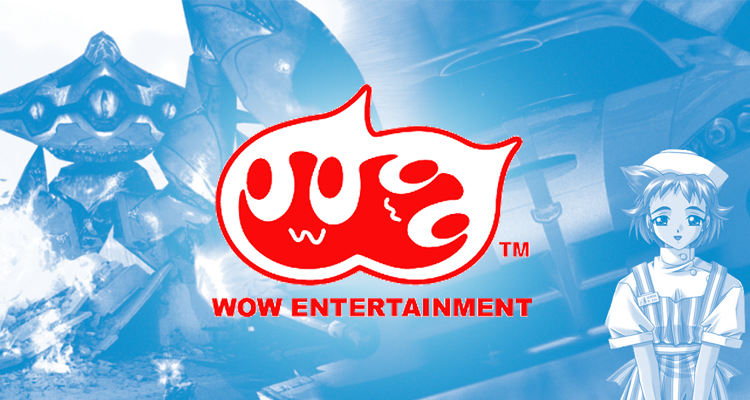
When SEGA WOW Month began, we took a look back at the games of SEGA’s Overworks. While Overworks existed for only a short span of time before merging with WOW Entertainment, this month has made it very clear that Skies of Arcadia made a major impact on SEGA fans. But what of WOW Entertainment? Unlike Overworks, WOW managed to release a large number of games spanning different genres on different pieces of hardware. From sequels to classic franchises like The House of the Dead and Columns, to new franchises like SEGA GT and arcade oddities like The Typing of the Dead, a collaboration with Namco, and a dog walking simulator. While WOW Entertainment can’t be pinned down to one iconic title, they more than made up for this with an amazing library of games!
Join us now for part two of our SEGA WOW retrospective, in which we take a look at the many games of WOW Entertainment.
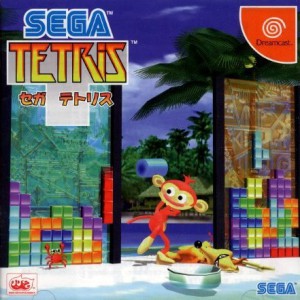 SEGA Tetris, 1999: Like other WOW Entertainment titles of the time, SEGA Tetris released to NAOMI arcade hardware (1999) and the Dreamcast (2000). Not to be confused with The Next Tetris, SEGA Tetris was a Japanese exclusive title executive produced by SEGA all-star Rikiya Nakagawa, producer of Die Hard Arcade, The House of the Dead and many other classic titles.
SEGA Tetris, 1999: Like other WOW Entertainment titles of the time, SEGA Tetris released to NAOMI arcade hardware (1999) and the Dreamcast (2000). Not to be confused with The Next Tetris, SEGA Tetris was a Japanese exclusive title executive produced by SEGA all-star Rikiya Nakagawa, producer of Die Hard Arcade, The House of the Dead and many other classic titles.
The game was incredibly popular in Japan, quickly becoming one of the most commonly known versions of the game. Gameplay rules introduced in SEGA Tetris went on to define future Tetris titles.
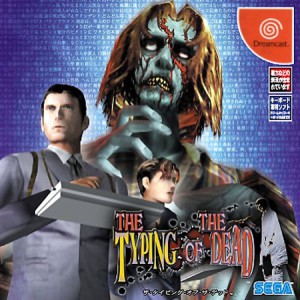 The Typing of the Dead, 1999: Perhaps one of the weirdest games ever to be released by SEGA, The Typing of the Dead was a reworking of The House of the Dead 2 swapping guns for keyboards to create an arcade take on the “teaches typing” genre. Released to arcades in 1999 by WOW Entertainment, the Dreamcast and PC releases were a collaboration between WOW Entertainment and Smilebit (which we’ll be covering in April for Year of the Developers).
The Typing of the Dead, 1999: Perhaps one of the weirdest games ever to be released by SEGA, The Typing of the Dead was a reworking of The House of the Dead 2 swapping guns for keyboards to create an arcade take on the “teaches typing” genre. Released to arcades in 1999 by WOW Entertainment, the Dreamcast and PC releases were a collaboration between WOW Entertainment and Smilebit (which we’ll be covering in April for Year of the Developers).
The game was a major success in Japan, leading to several future releases under the Typing of the Dead name including Typing of the Dead 2 which was a typing version of The House of the Dead III and the Western developed The Typing of the Dead: Overkill which was a typing version of The House of the Dead: Overkill.
Despite the wacky nature of the game, amazingly a Western localization of the game released in 2001, featuring english words and phrases. The Japanese PC release of the game saw two revisions, The Typing of the Dead 2003 and The Typing of the Dead 2004.
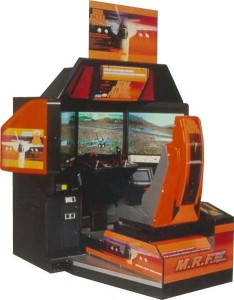 Sega Strike Fighter, 2000: Released to NAOMI arcade hardware (but sadly, not the Dreamcast), Sega Strike Fighter was a 3D aerial combat game loosely related to the After Burner series of games. The game is also seen as a follow-up to the 1991 SEGA AM2 developed arcade title Strike Fighter.
Sega Strike Fighter, 2000: Released to NAOMI arcade hardware (but sadly, not the Dreamcast), Sega Strike Fighter was a 3D aerial combat game loosely related to the After Burner series of games. The game is also seen as a follow-up to the 1991 SEGA AM2 developed arcade title Strike Fighter.
Unlike After Burner titles which feature a third person viewpoint, Sega Strike Fighter puts players into the cockpit of a fighter jet with a first-person view. If you ever have a chance to play the game, keep your eyes open for the deluxe cabinet which features a center screen flanked by right and left screens.
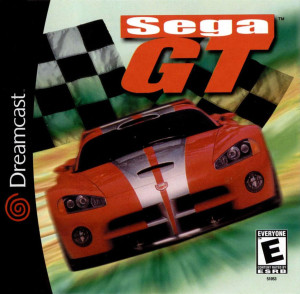 Sega GT, 2000: Released to the Dreamcast and Windows PC. Sega GT is seen as one of WOW Entertainment’s defining franchises. Designed to rival Sony’s Gran Turismo series, Sega GT featured a selection of over 130 licensed vehicles from a number of Japanese and American auto manufacturers. The PAL version expanded the offering with European manufacturers Alfa Romeo, Fiat, Mercedes-Benz and Audi.
Sega GT, 2000: Released to the Dreamcast and Windows PC. Sega GT is seen as one of WOW Entertainment’s defining franchises. Designed to rival Sony’s Gran Turismo series, Sega GT featured a selection of over 130 licensed vehicles from a number of Japanese and American auto manufacturers. The PAL version expanded the offering with European manufacturers Alfa Romeo, Fiat, Mercedes-Benz and Audi.
The game featured a Championship Mode, allowing the player to race across twenty two different tracks to earn licenses and win cups. Prize money could be used to purchase additional cars and parts, as well as allowing platers to build custom vehicles or modifying existing vehicles. While the game received positive reviews, sales were modest yet the series did see a sequel on Microsoft’s Xbox in 2002.
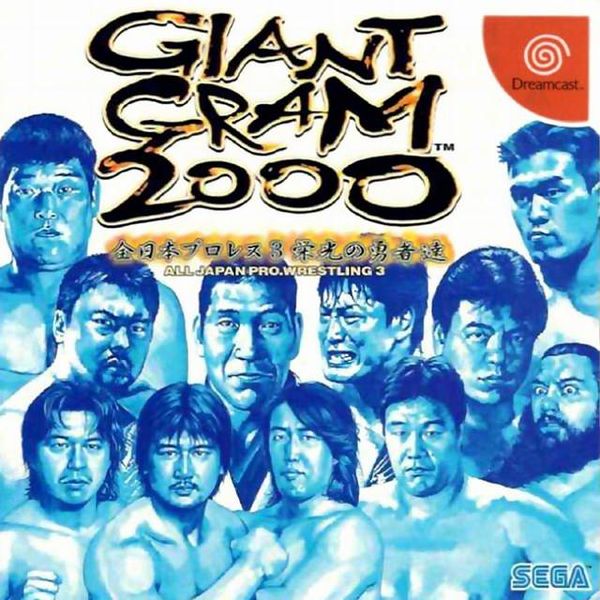 Giant Gram 2000 Zen Nihon Pro Wres 3 Eikou no Yuushatachi, 2000: A Japan-only title for NAOMI arcade hardware and the SEGA Dreamcast, Giant Gram 2000: Zen Nihon Pro Wres 3 Eikou no Yuushatachi was a sequel to Giant Gram Zen Nihon Pro Wres 2 in Nihon Budoukan and starred Japanese professional wrestlers.
Giant Gram 2000 Zen Nihon Pro Wres 3 Eikou no Yuushatachi, 2000: A Japan-only title for NAOMI arcade hardware and the SEGA Dreamcast, Giant Gram 2000: Zen Nihon Pro Wres 3 Eikou no Yuushatachi was a sequel to Giant Gram Zen Nihon Pro Wres 2 in Nihon Budoukan and starred Japanese professional wrestlers.
While Western gamers will likely not recognize any of the game’s wrestlers, the game is very import friendly and features great graphics and excellent gameplay. Those who have gone to the effort of importing the game claim the engine is one of the best, and praise the expansive roster of around fifty wrestlers as well as the game’s in depth wrestler creation mode.
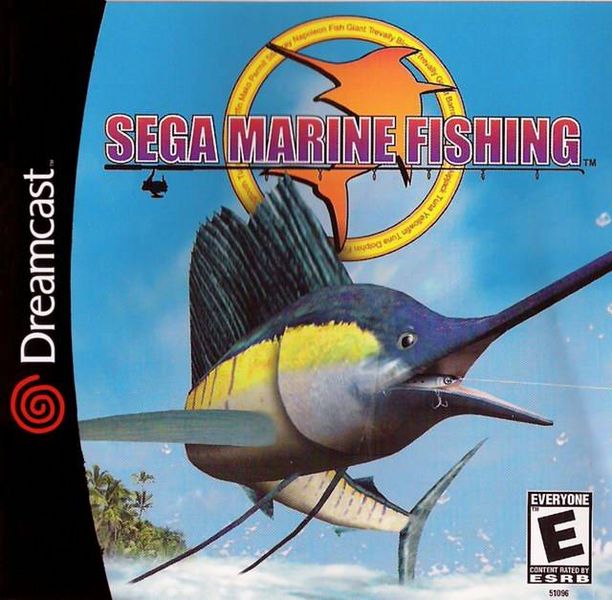 Sega Marine Fishing, 2000: Released to Sega NAOMI arcade hardware and the Dreamcast and PC, Sega Marine Fishing is a saltwater take on SEGA’s popular Sega Bass Fishing series, allowing players to venture into the ocean to catch sharks, swordfish, and other marine life. As players catch fish, they win item cards which can be traded for awesome equipment and accessories. The game featured a unique online component called “fish mail”, which allowed players could write short messages which were received by other players by catching fish. Think of it as Nintendo’s Miiverse posts before Miiverse was even a twinkle in Nintendo’s eye.
Sega Marine Fishing, 2000: Released to Sega NAOMI arcade hardware and the Dreamcast and PC, Sega Marine Fishing is a saltwater take on SEGA’s popular Sega Bass Fishing series, allowing players to venture into the ocean to catch sharks, swordfish, and other marine life. As players catch fish, they win item cards which can be traded for awesome equipment and accessories. The game featured a unique online component called “fish mail”, which allowed players could write short messages which were received by other players by catching fish. Think of it as Nintendo’s Miiverse posts before Miiverse was even a twinkle in Nintendo’s eye.
Sega Marine Fishing is one of four games that can be played using the Dreamcast fishing rod controller, making it a must own titles for owners of the accessory.
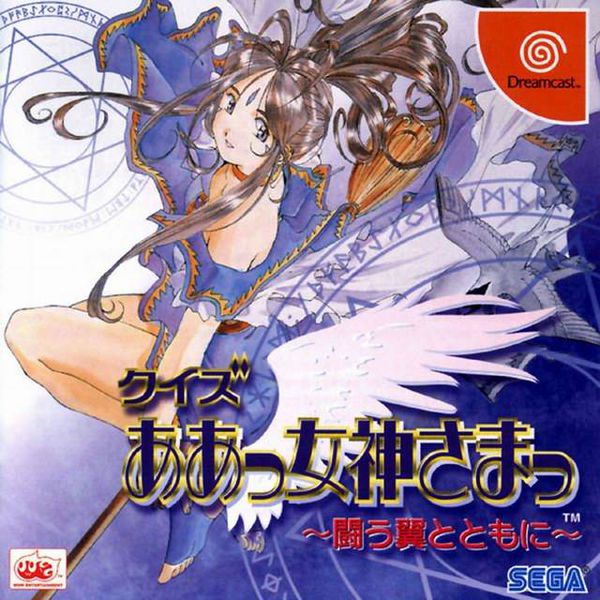 Quiz Aa! Megami-sama: Tatakau Tsubasa to Tomoni, 2000: Released to NAOMI arcade hardware and the Dreamcast, Quiz Aa! Megami-sama is a quiz game based on the Aa! Megami-sama (Oh My Goddess!) manga series. Being text heavy and requiring knowledge of the manga, the game is not import friendly however Dreamcast collectors and fans of the manga might be interested in the game’s limited edition box.
Quiz Aa! Megami-sama: Tatakau Tsubasa to Tomoni, 2000: Released to NAOMI arcade hardware and the Dreamcast, Quiz Aa! Megami-sama is a quiz game based on the Aa! Megami-sama (Oh My Goddess!) manga series. Being text heavy and requiring knowledge of the manga, the game is not import friendly however Dreamcast collectors and fans of the manga might be interested in the game’s limited edition box.
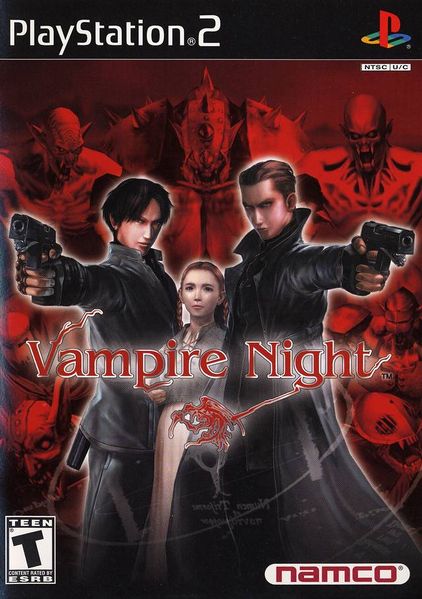 Vampire Night, 2000: One of WOW Entertainment’s more unique titles was Vampire Night for Namco System 246 arcade hardware in 2000 and the Playstation 2 in 2001. What makes the game unique is that it is not a SEGA franchise, but rather a Namco one. The game is an on-rails light gun shooter, much like The House of the Dead. Players assume the roles of vampire hunters Michel and Albert, armed with eight-slug shotguns with the intent to kill vampires in stages taking place in a small village and a castle. In an interesting twist, the game is not set in the past, but rather in an alternate 2006 in which technical progress is held back to 19th century standards. Players are tasked with rescuing villagers before they are turned into full vampires and to win the game they must eliminate the head vampire and his minions.
Vampire Night, 2000: One of WOW Entertainment’s more unique titles was Vampire Night for Namco System 246 arcade hardware in 2000 and the Playstation 2 in 2001. What makes the game unique is that it is not a SEGA franchise, but rather a Namco one. The game is an on-rails light gun shooter, much like The House of the Dead. Players assume the roles of vampire hunters Michel and Albert, armed with eight-slug shotguns with the intent to kill vampires in stages taking place in a small village and a castle. In an interesting twist, the game is not set in the past, but rather in an alternate 2006 in which technical progress is held back to 19th century standards. Players are tasked with rescuing villagers before they are turned into full vampires and to win the game they must eliminate the head vampire and his minions.
In a bizarre twist, it is revealed that Michel and Albert were actually half-vampires created by the vampires as a way to kill themselves, but the evil beings became afraid of death, changed their minds, and decided to fight the hunters. In the end, good prevails and Michel and Albert defeat the head vampire, however they decide to end their own lives to put an end to the whole conflict. With a unique story and setting, and an interesting collaboration between SEGA’s WOW and Namco, Vampire Night is highly recommended to light gun fans and fans of SEGA and Namco’s horror titles.
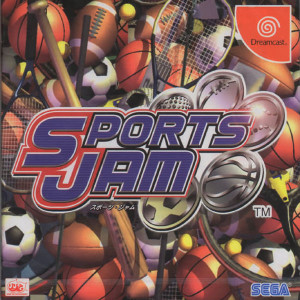 Sports Jam, 2001: Sports Jam is a Dreamcast and NAOMI arcade release featuring a number of mini-games representing different sports. Those who have played recent Mario & Sonic titles should feel right at home in this game, as it plays very similarly to those titles, almost acting as a precursor to the mascot crossover series. While the game was a great fit for arcades, the home console release was criticized for not offering up enough content, featuring a new “original mode” which hardly differed from the arcade mode, offering up cosmetic rewards that changed the game’s characters and announcer. Still, it’s a straight port of the arcade release, and seeing as in 2015 (or whatever year you are reading this) the game can be found for dirt cheap, why complain about a lack of content?
Sports Jam, 2001: Sports Jam is a Dreamcast and NAOMI arcade release featuring a number of mini-games representing different sports. Those who have played recent Mario & Sonic titles should feel right at home in this game, as it plays very similarly to those titles, almost acting as a precursor to the mascot crossover series. While the game was a great fit for arcades, the home console release was criticized for not offering up enough content, featuring a new “original mode” which hardly differed from the arcade mode, offering up cosmetic rewards that changed the game’s characters and announcer. Still, it’s a straight port of the arcade release, and seeing as in 2015 (or whatever year you are reading this) the game can be found for dirt cheap, why complain about a lack of content?
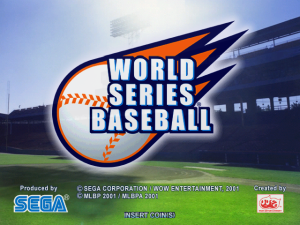 World Series Baseball, 2001: Released to NAOMI hardware in 2001 worldwide, World Series Baseball (called Super Major League in Japan) brought baseball to arcades with simple controls and fast paced gameplay. The game featured over 700 players from 30 teams, and recreated every major league stadium. Players selected from three modes: Automatic Mode for beginners with fielders being computer controlled, Manual Easy Mode for intermediate players with player controlled fielders and slower paced fielding, and Manual Fast Mode for experts with gameplay taking place in realtime.
World Series Baseball, 2001: Released to NAOMI hardware in 2001 worldwide, World Series Baseball (called Super Major League in Japan) brought baseball to arcades with simple controls and fast paced gameplay. The game featured over 700 players from 30 teams, and recreated every major league stadium. Players selected from three modes: Automatic Mode for beginners with fielders being computer controlled, Manual Easy Mode for intermediate players with player controlled fielders and slower paced fielding, and Manual Fast Mode for experts with gameplay taking place in realtime.
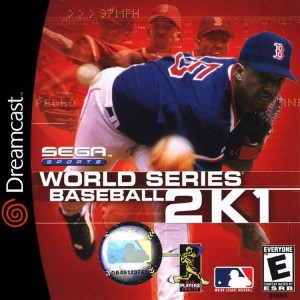 World Series Baseball 2K1, 2001: Despite being a part of the 2K series, World Series Baseball 2K1 was not developed by Visual Concepts but rather WOW Entertainment (if it wasn’t, it wouldn’t be on this list!). World Series Baseball was a pre-existing SEGA franchise dating back to 1994 with releases on the Mega Drive, Game Gear, 32X, Saturn, PC, arcades and later the Xbox.
World Series Baseball 2K1, 2001: Despite being a part of the 2K series, World Series Baseball 2K1 was not developed by Visual Concepts but rather WOW Entertainment (if it wasn’t, it wouldn’t be on this list!). World Series Baseball was a pre-existing SEGA franchise dating back to 1994 with releases on the Mega Drive, Game Gear, 32X, Saturn, PC, arcades and later the Xbox.
World Series Baseball 2K1 featured players with abilites based on real sports data, including signature batting and pitching styles as well as real-time weather. The series continued with World Series Baseball 2K2 developed by Visual Concepts and World Series Baseball 2K3 developed by Blue Shift and released to the Playstation 2 and Xbox.
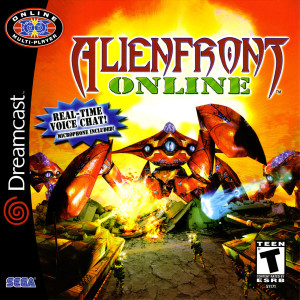 Alien Front/Alien Front Online, 2001: Released to arcades worldwide as Alien Front and released exclusively to the North American Dreamcast as Alien Front Online, the game was a team-based vehicluar combat game featuring an army versus aliens. In arcades, the game only featured local multiplayer, but on the Dreamcast the game featured online gameplay with the ability to send short voice messages to other players.
Alien Front/Alien Front Online, 2001: Released to arcades worldwide as Alien Front and released exclusively to the North American Dreamcast as Alien Front Online, the game was a team-based vehicluar combat game featuring an army versus aliens. In arcades, the game only featured local multiplayer, but on the Dreamcast the game featured online gameplay with the ability to send short voice messages to other players.
The reason for a limited Dreamcast release was due to timing of the game’s launch. Releasing six months after SEGA announced an end to Dreamcast support and weeks before SEGA switched from a free online gameplay model to a pay model, the online community was small and short lived. Plans to release the game to Europe and Japan were scrapped, and a North American release of Alien Front Online to arcades was also cancelled. Unlike the original Alien Front, Alien Front Online for arcades would have featured 4 vs. 4 Dreamcast vs. NAOMI matches over the internet as well as offering local multiplayer.
 Sega Bass Fishing 2, 2001: Released to NAOMI hardware and Japanese and American Dreamcasts, Sega Bass Fishing 2 was the sequel to Sega Bass Fishing and was known in Japan as Get Bass 2. The sequel touted refined gameplay, more modes, and improved fish AI over the original game. Like other fishing games on the console, the game took advantage of the Dreamcast fishing controller.
Sega Bass Fishing 2, 2001: Released to NAOMI hardware and Japanese and American Dreamcasts, Sega Bass Fishing 2 was the sequel to Sega Bass Fishing and was known in Japan as Get Bass 2. The sequel touted refined gameplay, more modes, and improved fish AI over the original game. Like other fishing games on the console, the game took advantage of the Dreamcast fishing controller.
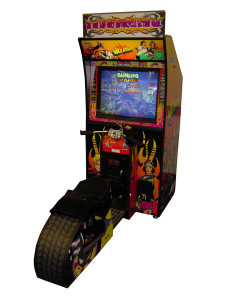 Wild Riders, 2001: Released to NAOIMI 2 arcade hardware, Wild Riders was a sit down cell-shaded motorcycle racing game. Wild Riders takes place inside a comic book titled “Wild Riders” starring bikers Trish Moon and Keith Raven. Moon and Raven are on the run from the law, putting the player in control of the characters on motorcycles in high speed chases through the city.
Wild Riders, 2001: Released to NAOIMI 2 arcade hardware, Wild Riders was a sit down cell-shaded motorcycle racing game. Wild Riders takes place inside a comic book titled “Wild Riders” starring bikers Trish Moon and Keith Raven. Moon and Raven are on the run from the law, putting the player in control of the characters on motorcycles in high speed chases through the city.
Aside from the usual racing mechanics, the game also features the ability to pull up on the handlebars to jump over obstacles, and to push down on the handlebars to skid sideways under barriers. The comic book elements very much give the game a Comix Zone vibe, while the cel shaded graphics and running from the law very much resembles Jet Set Radio. The game never saw a home console release, but it can be easily emulated and is well worth checking out either at an arcade (if you can still find it). Don’t believe me? Watch the insane gameplay video below.
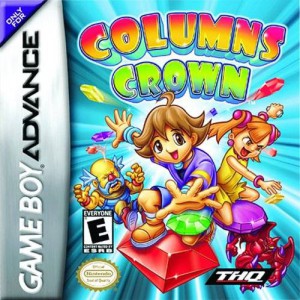 Columns Crown, 2001: Released to Nintendo’s Game Boy Advance, Columns Crown is puzzle game from SEGA’s popular Columns franchise. Like the classic games in the series, the object of the game is to match up jewels horizontally, vertically, or diagonally in groups of three or more. Aside from a story mode and updated graphics, there are no gameplay revisions that make Columns Crown stand out from past Columns games. The game saw a rerelease in 2005 as a 2 in 1 cartridge also featuring Sonic Pinball Party.
Columns Crown, 2001: Released to Nintendo’s Game Boy Advance, Columns Crown is puzzle game from SEGA’s popular Columns franchise. Like the classic games in the series, the object of the game is to match up jewels horizontally, vertically, or diagonally in groups of three or more. Aside from a story mode and updated graphics, there are no gameplay revisions that make Columns Crown stand out from past Columns games. The game saw a rerelease in 2005 as a 2 in 1 cartridge also featuring Sonic Pinball Party.
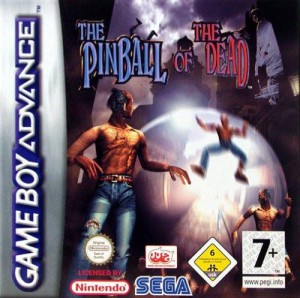 The Pinball of the Dead, 2002: In an attempt to one up themselves with the release of The Typing of the Dead, WOW Entertainment released a pinball spin-off of the popular House of the Dead franchise. Dubbed The Pinball of the Dead, the game was a Gamebody Advance pinball game featuring tables based on areas seen in The House of the Dead and The House of the Dead 2. Not only does the game nail and look and feel of the original games with dead-on graphics and sounds, but it even remakes popular boss battles in which you shoot pinballs at the games bosses. The Pinball of the Dead is one of the quirkiest Game Boy Advance games, and is a definite must play for fans of the franchise, or for those who simply like a great game of pinball.
The Pinball of the Dead, 2002: In an attempt to one up themselves with the release of The Typing of the Dead, WOW Entertainment released a pinball spin-off of the popular House of the Dead franchise. Dubbed The Pinball of the Dead, the game was a Gamebody Advance pinball game featuring tables based on areas seen in The House of the Dead and The House of the Dead 2. Not only does the game nail and look and feel of the original games with dead-on graphics and sounds, but it even remakes popular boss battles in which you shoot pinballs at the games bosses. The Pinball of the Dead is one of the quirkiest Game Boy Advance games, and is a definite must play for fans of the franchise, or for those who simply like a great game of pinball.
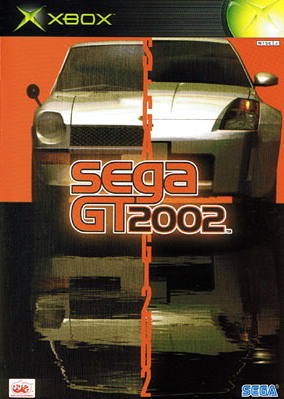 Sega GT 2002, 2002: WOW returned to one of their early franchises with a sequel to the Dreamcast’s SEGA GT with SEGA GT 2002. Like many SEGA games from the early 2000s, the game was initially meant to release on the Dreamcast, but development was shifted to Microsoft’s Xbox and the game became an exclusive. The game was SEGA’s answer to Sony’s Gran Turismo 3, and as such was a perfect fit for the Xbox. Unfortunately, many critics thought the game did not take full advantage of Xbox’s superior hardware specs. In 2002 the game saw an update in the form of SEGA GT Online which featured 40 new cars, new tracks, weather options, new modes and the ability to compete online.
Sega GT 2002, 2002: WOW returned to one of their early franchises with a sequel to the Dreamcast’s SEGA GT with SEGA GT 2002. Like many SEGA games from the early 2000s, the game was initially meant to release on the Dreamcast, but development was shifted to Microsoft’s Xbox and the game became an exclusive. The game was SEGA’s answer to Sony’s Gran Turismo 3, and as such was a perfect fit for the Xbox. Unfortunately, many critics thought the game did not take full advantage of Xbox’s superior hardware specs. In 2002 the game saw an update in the form of SEGA GT Online which featured 40 new cars, new tracks, weather options, new modes and the ability to compete online.
Sega GT 2002 is one of the most common Xbox games thanks to being widely bundled with the console alongside Jet Set Radio Future. The bundle also included the much improved Controller S, making it incredibly enticing to SEGA fans who liked the feel of the Dreamcast pad and wanted to play sequels to two popular Dreamcast titles.
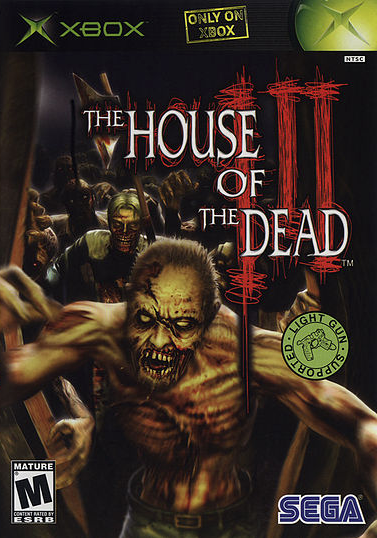 The House of the Dead III, 2003: Released to Chihiro arcade hardware and Microsoft’s Xbox, The House of the Dead III was one of WOW Entertainment’s final games before merging with Overworks to form SEGA WOW. The game was also WOW Entertainment’s only official sequel in the franchise, having previously only worked on ports and spin-offs.
The House of the Dead III, 2003: Released to Chihiro arcade hardware and Microsoft’s Xbox, The House of the Dead III was one of WOW Entertainment’s final games before merging with Overworks to form SEGA WOW. The game was also WOW Entertainment’s only official sequel in the franchise, having previously only worked on ports and spin-offs.
Set in a post-apocalyptic 2019, the game stars Lisa Rogan, daughter of Thomas Rogan, who is on a mission to find her father who went missing after leading a team of military commandos to investigate Curien’s EFI Facility Center. Accompanying Lisa is the fan favorite G, who has aged since we last saw him but still has the energy to blast away mutants.
Despite taking place in the (not so) distant future, the game has flashbacks tying in with past games of the series and sees the return of series villain Doctor Curien who has been resurrected in a cyborg body with electrokinetic abilities. The game features four endings which change depending on the player’s performance, meaning the biggest House of the Dead fans will have to try and play through the game four times and intentionally play at varying degrees of success to see all the story content the game provides.
The game was later ported to PC in 2005, and saw a Wii port in The House of the Dead 2 & 3 Return bundle. In early 2012, the PlayStation 3 saw a digital release of the game with PlayStation Move support.
Additional Games
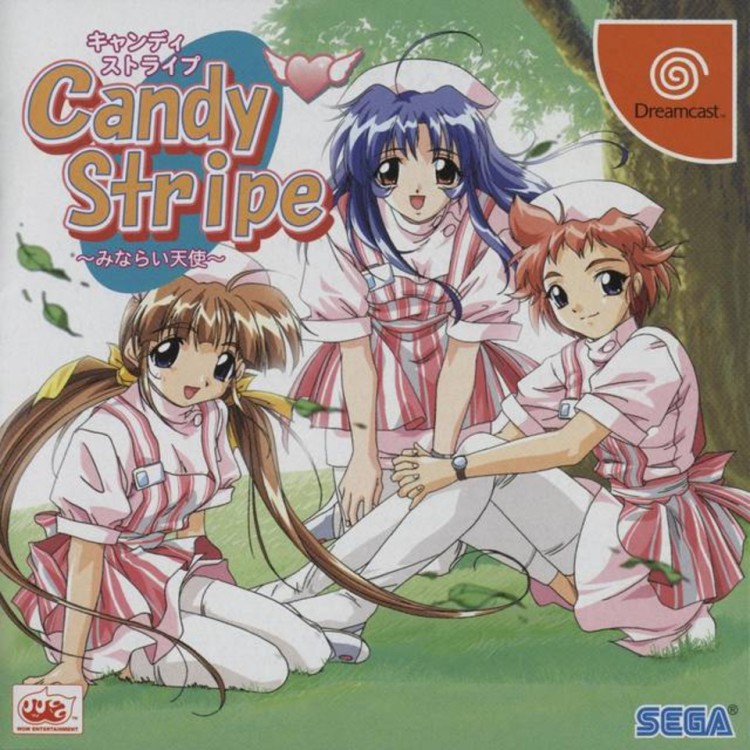
Candy Stripe, 2001: A Japanese exclusive dating sim for the Dreamcast. The game takes place in the fictional Holy Angels Hospital. The player is a medical intern, and the game’s objective is to establish personal relationships with one of three incoming nurses over a one-year period.
Inu no Osanpo, 2001 (developed with Cave): An arcade game in which you have to walk an on-screen dog and maintain its happiness.
Dynamic Golf, 2001: Known as Virtua Golf in Japan, an arcade golf simulator.
Lupin III: The Shooting, 2001: A light gun arcade game based on the popular Lupin III manga.
Lupin III: The Typing, 2002: Similar to The Typing of the Dead, this game was a typing variation of Lupin III: The Shooting released to arcades
Sega Bass Fishing Duel, 2002: Known as Getbass Battle in Japan and released worldwide to the Playstation 2, this Sega Bass Fishing game was notable for featuring split-screen 2-player battles.
Altered Beast: Guardian of the Realms, 2002: A Game Boy Advance followup to Altered Beast developed by 3d6 Games and overseen by WOW Entertainment. Many critics found it more enjoyable than the original.
Gekitou Pro Yakyuu, 2003: An arcade baseball game released to Triforce arcade hardware and ported to the Playstation 2 and Nintendo Gamecube in Japan.
Super Real Tennis, 2004: One of WOW Entertainment’s final games, a 3D tennis game for mobile phones resembling SEGA’s Virtua Tennis titles. Gamespot praised the game, calling it “one of the most playable mobile offerings we’ve seen–as well as one of the best-looking. This is a mobile tour-de-force that feels more like a full-fledged modern console game than something that should appear on a cell phone.”
In the comments below, share your favorite WOW Entertainment titles! Were you one of the lucky SEGA fans to pick up a SEGA GT/JSRF Xbox bundle?
Ad:
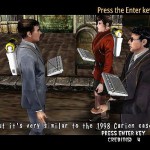
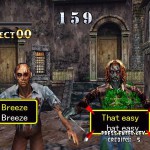
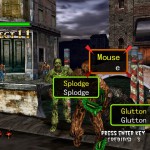
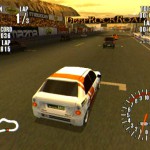
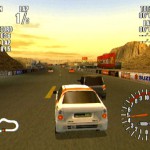
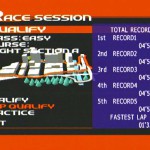

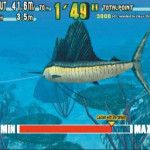
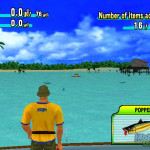
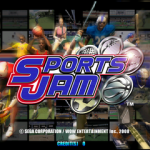
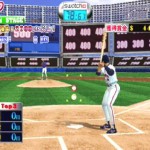
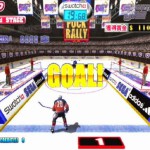
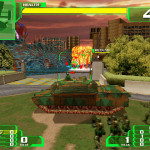
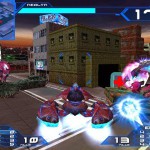
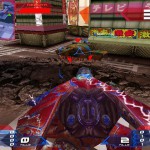
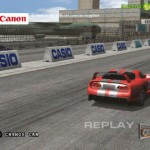
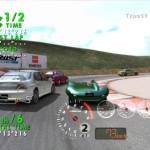
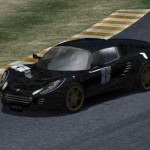

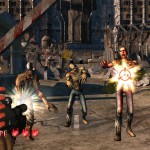

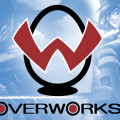




Wow, it really bring back nostalgia. Columns Crown was one of my favorite GBA games ever, it’s sad that it never had sequel or spiritual sucessor.
This mixed line-up of games is probably the reason for consolidating Sega’s developers.
I guess if I could try to peg WOW Entertainment down to one thing, it would be simulations with SEGA GT, Candy Stripe, Bass Fishing, and Dynamic Golf. Though they also handled some legacy titles like Columns and HotD and made some really off the wall stuff like Typing and Pinball of the Dead and Wild Riders.
Really diverse developer, and surprising how many consoles they spanned. It was kind of unique for them to have a strong presence in both arcades and home consoles, though they did this with several ports.
I remember Pinball of the Dead, I was expecting something awesome like the legendary Devil’s Crush aka Dragon’s Fury, but it could not reach my expectations lol On the other hand, I remember Sonic Pinball Party being a pleasant surprise, specially the Nights pinball.
love these sega developer features! You do an amazing job! I Love all these games, the nostalgia, arcade, etc.
I think you missed one title, Home Run King on the Gamecube was a cool baseball game!